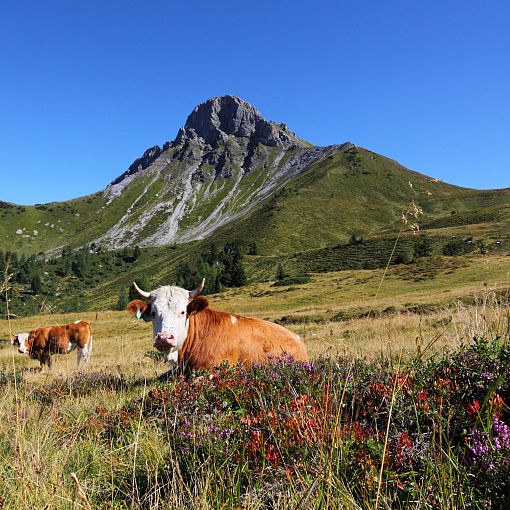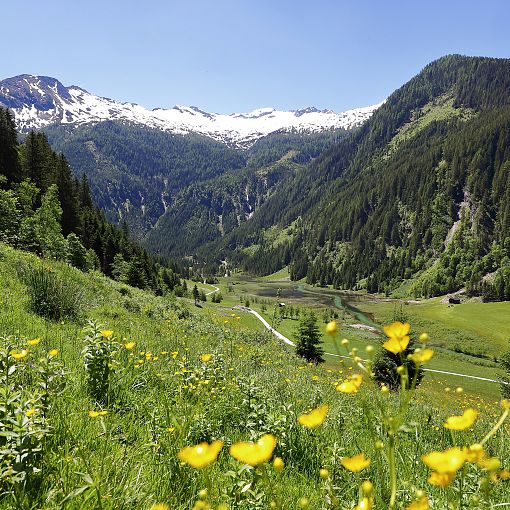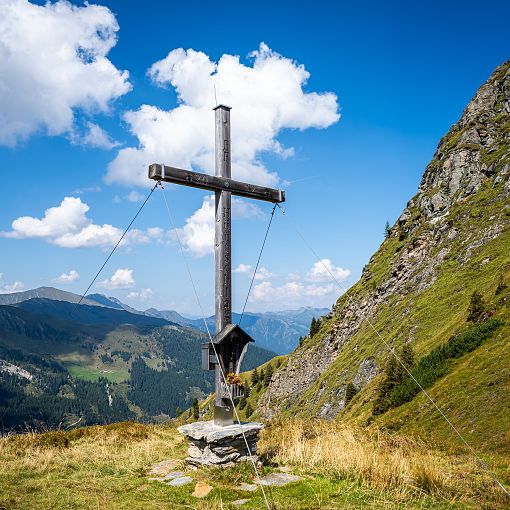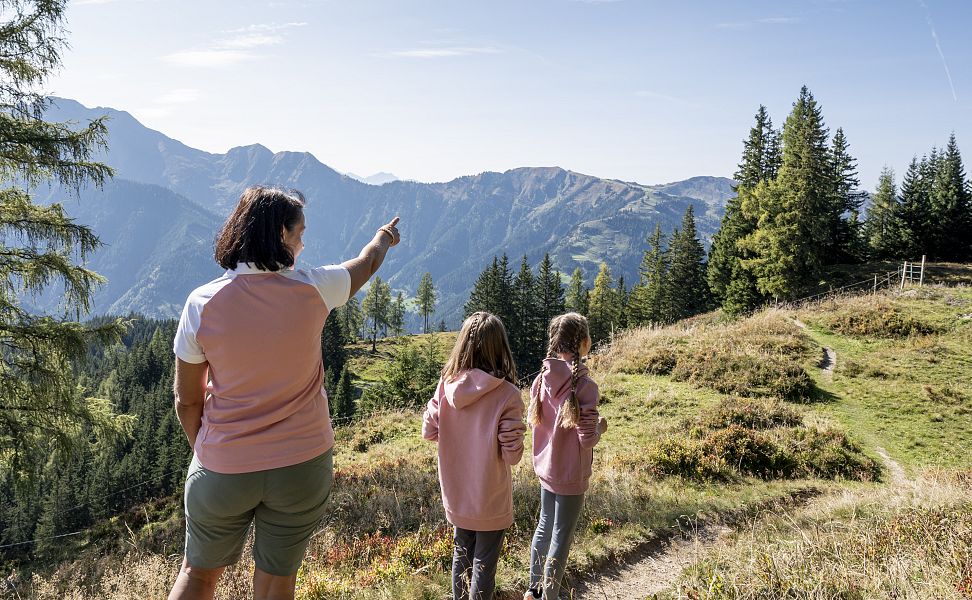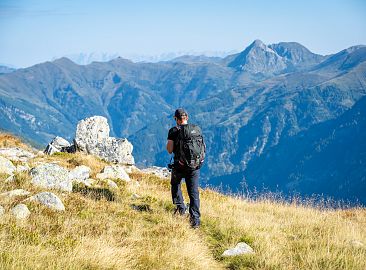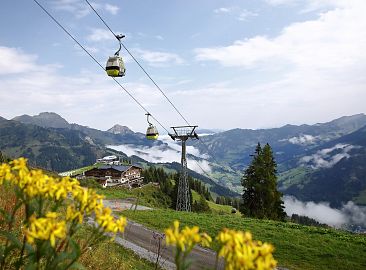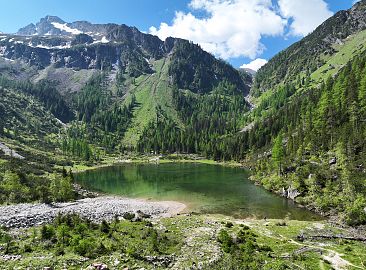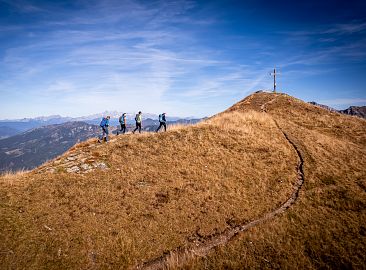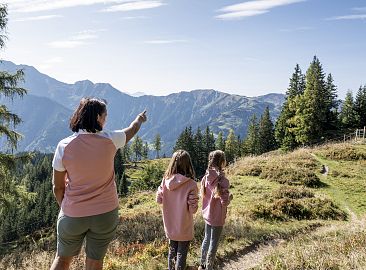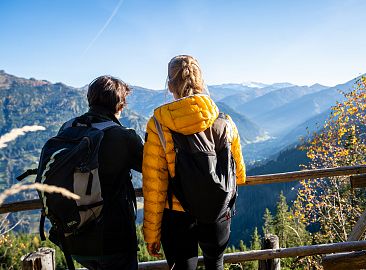Correct Behavior
when Hiking
Your safety, as well as the environment's, is paramount to us. To ensure both, please behave correctly whenever you are in the mountains. That way, your hiking and mountain biking adventures will be memorable for all the right reasons. Before you head into the mountains, it's crucial to plan your hike, mountaineering tour, or mountain biking route carefully..
Naturally, spending time in the mountains comes with its own set of risks. These hazards can vary widely, from weather conditions, lightning, and cold, to sun exposure, rockslides, and even altitude-related issues or exhaustion. In winter or early spring, avalanches pose an additional risk. However, by following some basic rules, you can easily protect yourself and others, proactively preventing dangerous situations.
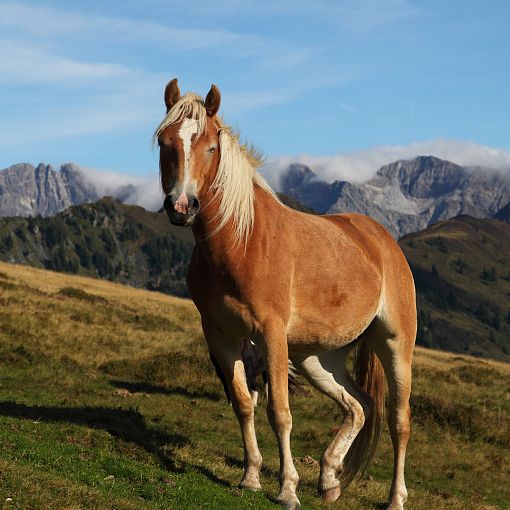
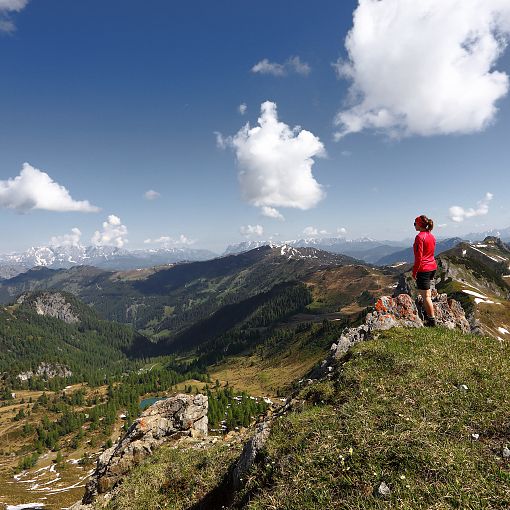
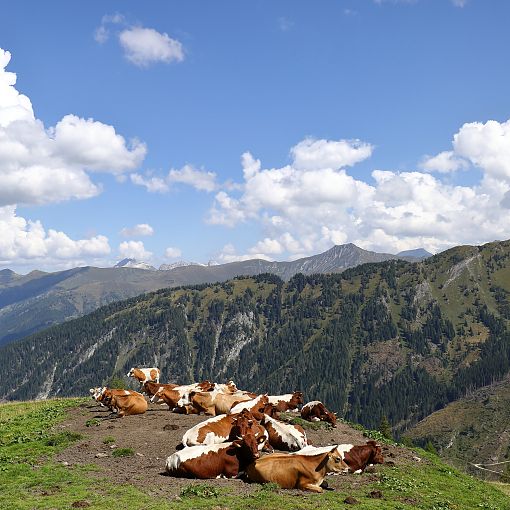
Time planning for hikes
Make an approximate time plan for your hikes and mountain tours in advance. Calculate about 350 meters of elevation gain per hour and around 4 km of distance per hour. Don't forget to schedule appropriate breaks: Take a short rest after every 1 ½ to 2 hours at the most.
Choose your tour so that you are already at the mountain hut in case of impending bad weather, or you can turn back to the valley at any time as needed. Especially when hiking with children, allow for extra time.
Basic gear for hiking
- Sturdy shoes with tread
- Backpack
- Sun protection
- Warm clothing
- Windproof outerwear
- Plenty of drinks and provisions
- Small first-aid kit (gauze bandage, adhesive tape, plasters, scissors or knife)
- Orientation aids such as a hiking map, etc.
How to behave in case of emergency
Stay calm in the event of an accident! Try to summon help using your mobile phone or signals such as shouting, whistling, waving with large pieces of clothing, etc. Report who you are, what happened, and where you are. Seriously injured persons should remain in a visible location at the accident site, but away from potential danger areas. Never leave injured people unattended!
Important phone numbers:
- Mountain Rescue: 140
- Emergency Response: 144
- Fire Department: 122
- Police: 133
- Dr. Ernst Toferer: +43 (0) 6414 / 388
- Dr. Julia Gerzer: +43 (0) 6417 / 22580
- Dr. Matvei Bredikhin: +43 (0) 6414 / 88010
How to behave around animals
On the alpine pastures of Grossarltal, you will encounter various animals such as cows, calves, horses, sheep, etc. That said, keep the following in mind:
- Do not provoke the animals.
- Behave "normally."
- Show no fear.
A stick can often help to visually assert the necessary respect. Often the animals are just curious and want to play. Avoid harassing young animals at all costs. Mother animals may try to defend their young due to their protective instinct.
This is especially true for hikers with dogs. Always keep your dog on a leash and never let it chase livestock. If an animal attacks your dog despite your having it on a leash, do not restrain your dog. Let him loose for your own protection.
Behavior during thunderstorms
If you get caught in a thunderstorm on the mountain despite careful planning, avoid staying at the following places:
- On the summit
- On ridgelines
- Under isolated trees
- Near water channels
- At the base of rock walls
- In the entrance area of caves
- Near high-voltage lines
Instead, seek out valleys and depressions. Though real protection is only offered by a safe shelter or car.
A thunderstorm does not develop within a few minutes. There are always some warning signs and alarm signals beforehand. Please pay attention to these and turn back if necessary.
- Warning signs for thunderstorms: muggy air, cumulus clouds
- Alarm signals: cumulus clouds with dark underside, frayed edges, rumble of thunder in the distance
- Threats to life: Electrical charge in the air (hair stands up, crackling...). In such circumstances, leave the danger area immediately! This is indeed a LIFE-THREATENING situation!
The 10 basic rules for hikers
- 1. Before every mountain tour, assess your personal condition and the abilities of yourself and your companions – and especially your children's. The length of the tour should be based on this.
- 2. Plan each tour carefully. Information from hiking maps, hosts, and hut staff can be very helpful.
- 3. Pay attention to the necessary equipment (see above), sufficient provisions, and the weather forecast.
- 4. Always let your host, hut staff, or other acquaintances know your hiking destination and, if possible, the time you plan on returning. Record your destination and route in the hut and summit logbooks. In an emergency, this helps to find you quickly and easily.
- 5. Adjust the pace to your and your partners' physical abilities. The pace should always be based on the weakest member of the group. Walking too fast leads to premature exhaustion. Remember: you will usually also have to hike all the way back.
- 6. Stay on the marked paths. Walking on steep grassy slopes (especially when wet), snowfields, or glaciers always involves additional dangers.
- 7. Be aware of falling rocks, which can often be triggered by animals such as chamois, sheep, etc., and do not kick down any stones yourself, which will endanger other hikers.
- 8. Turn back in time if your condition isn’t sufficient or bad weather is impending. There is no shame involved, but rather it’s proof that you are actually a cautious hiker.
- 9. Stay calm if an accident should occur! Please note the separate set of rules for such an eventuality.
- 10. Keep the mountains clean!
